The Traditional Food of Naples, Italy! A Taste of Napoli!
.
The FOOD of Naples and Campania
As in any part of Italy, Neapolitans are passionate and quite opinionated about their cuisine. The food of Campania is as exuberant as its natives. Even though the heartier food of Northern Italy is so well known for its prosciutto, parmigiana, and balsamico ingredients, what is known as ‘Mediterranean Cuisine’, and that which is much healthier for us, is from the Southern part of Italy, including the food of Naples and Campania. The cooking of this region aims to preserve the flavors of the local fresh ingredients as well as their fragrance, thereby maintaining a focus on simplicity rather than sophistication. Southern Italian food is considered to be the ‘soul of Italy’.
The cuisine is more spicy and reliant on the sun-kissed vegetables available year-round, including superb artichokes and aubergine (eggplant), courgettes (zucchini) sun-dried pomodori (tomatoes). Bumper crops of dried red chili peppers, garlic, herbs, olives, olive oil and salty capers are also harvested. Campania is famous for its fruit orchards that produce some of the best lemons and oranges, figs, peaches and apricots, and also grapes from numerous vineyards. Almonds and hazelnuts of the highest quality hale from this region. Pasta is more often dried in this southern part of Italy versus the fresh pasta of the North, although cooks do use fresh pasta as well. And it is in Campania where the tomato was first introduced to Italy and used in it’s cuisine.
San Marzano tomatoes’ enhanced rich flavor and deep red color result from flourishing in the rich, fertile volcanic soil of Campania. Additionally, the ideal growing climate exists in Southern Italy that includes plenty of sunshine with idyllic warm days and cooler evenings.
Seafood and sea-salt are stand-out ingredients in the kitchen. The sea is a highlight of the food from which it generously offers an endless array of pristine seafood harvested from anchovies to clams, mussels and squid, and even octopus! Traditionally there is a shorter supply of meat in this region, so it goes without saying that less meat is consumed that has greater reliance on lamb and seafood.
“When the moon hits your eye like a big pizza pie, that’s amore!
The natives of Naples claim that their city is the original home to authentic pizza! The world’s first pizzeria opened its doors in Naples and still remains in business today. Using the simplest of ingredients, Pizza Margherita is a triumph of Neapolitan cuisine! Becoming more popular now in the States, the humble ingredients of fresh San Marzano pomodori (tomatoes), fresh aromatic basil and mozzarella (di bufala) on char-marked dough is all that is required to make this highly-praised and delicious pizza. The colors of red, white, and green represent the official colors of the Italian flag. Fresh, and bubbly-hot straight out of ancient wood-fired ovens, this is the ultimate!
(photo credit: Rosalind Corieri Paige)
.
.
classic Neapolitan Margherita Pizza
(photo credit: dailymail uk)
.
.
Spaghetti Alla Puttanesca
(photo credit: girlichef blog, click for recipe)
.
Parmigiana di Melanzane (Eggplant Parmesan)This is one Italian classic dish that has disagreement among several regions in Italy as to it’s origin. As with all traditional recipes, there are numerous claims to the definitive method of preparation. Because this region is so renowned for its fresh eggplant that is available throughout the year, I’m going to agree with the Neapolitan saying: “A parmigiana e’ mulignane ca se fa a’ Napule è semp’a meglio!” (The eggplant Parmesan that is made in Naples is always the best!). The authentic method for creating this dish includes all of the region’s noted flavors with layers of ‘aubergine’ (eggplant )with Provola and Parmigiana cheeses, San Marzano tomatoes, olive oil, onions, garlic and fresh basil!
Bistecca or Carne alla Pizzaiola (Meat in Pizza Style)One of the favorite, pillar, everyday Neapolitan dishes. Pizzaiola is made from inexpensive cuts of meat that are seared and then cooked long enough to be tenderized in a spicy tomato-based sauce of peppers, capers, garlic, basil, oregano, and olive oil. As with all Italian recipes, numerous versions abound! Some cooks might add olives or anchovies and even some wine for a more lusty flavor and fragrance! Many Italian cooks, such as in my family, always prepare a ‘soffritto’ for this and other recipes which is a simple combination of sautéed onions, celery and carrots . . . we also add garlic.
SfogliatellePaper-thin layers of beautifully baked clam-shaped pastry pockets filled with an oozing, buttery filling of creamy ricotta cheese, sugar, cinnamon, and little bits of candied citrus. Along with a generous sprinkling of powdered sugar on top, Sfogliatelle comprise a regional dessert specialty. Being very labor intensive, these sweet pastries are a Neapolitan treat not to be missed and enjoyed while sipping a good cup of Italian coffee!
ZeppoleTradition dictates that these pastries are to be served on St. Joseph’s Day on March 18th. Because my family is of Northern Italian descent, we were not raised with any awareness of this holy day tradition at all! It was only until I had met an Italian-American from Southern Italian heritage that I learned of how and why this feast is celebrated! Every year small to very large tables of food are presented as a form of an ‘altar’ to honor St. Joseph who people prayed ardently to him in order to bring them out of a horrible drought. When it finally came to an end, this wonderful and delicious tradition of thankfulness began.StruffoliThis Neapolitan sweet is commonly served at Christmas and Easter. Always served warm, these little balls of deep fried dough are drizzled with honey and decorated with ‘diavulilli’ (colored sprinkles) and sometimes with cinnamon-sugar or bits of orange rind. Struffoli balls are cleverly stacked on top of each to resemble a Christmas tree.
In no way is this list comprehensive of the foods of Naples and Campania! This is just a brief mention of some of the more well-known traditional dishes of the region. If you would like to comment and let me know of anything that you feel should be mentioned, please let me know and I will be more than happy to edit this post upon my return from Italy.

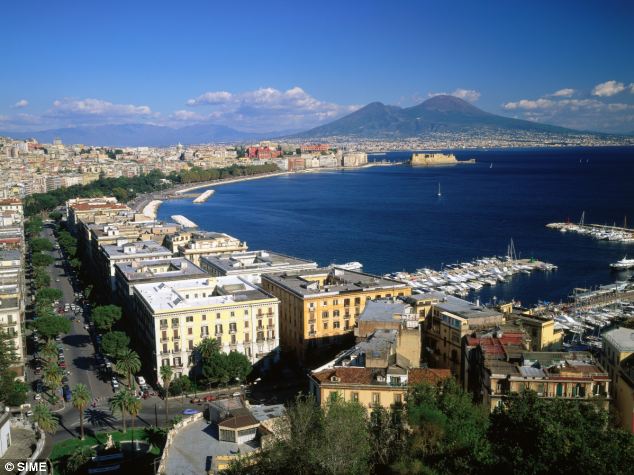
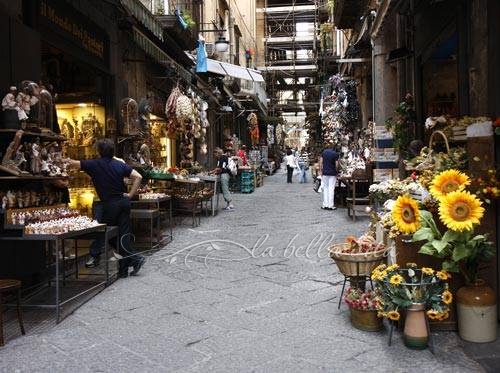

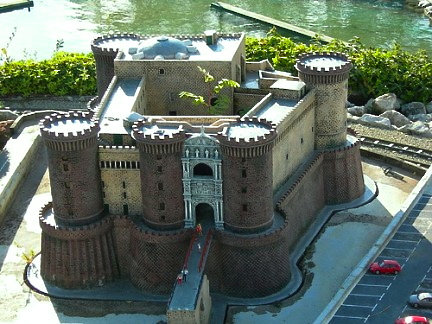
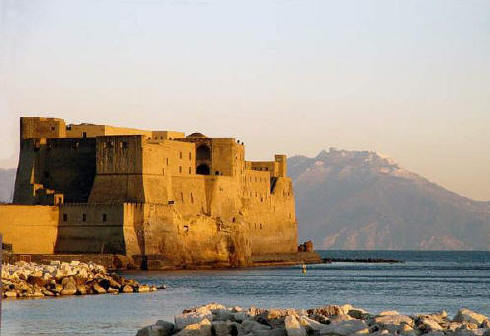
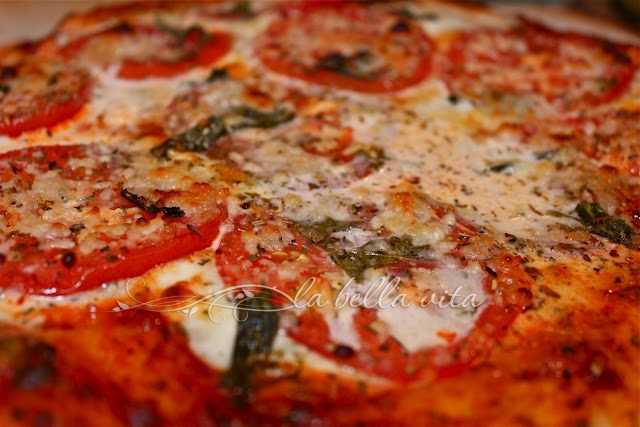
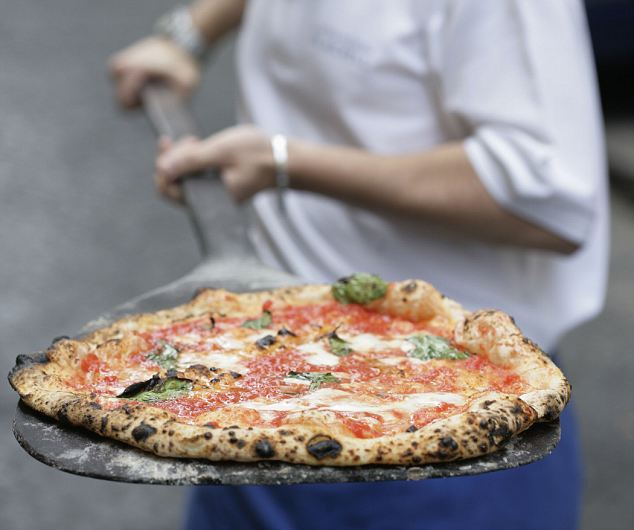
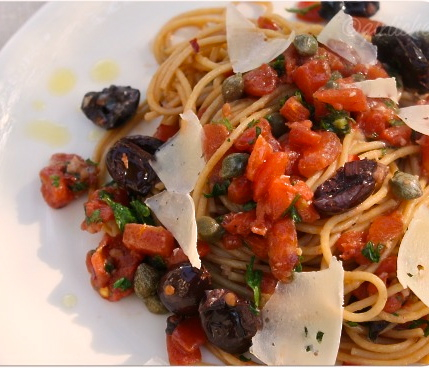

I need some help with a soup recipe. As a young adult, I loved Knorr Napoli Soup…they have long since discontinued making it.
I would love to know what made the broth taste sooo wonderful. It was very liquidy w tiny pieces of veg and little pasta bits. I would love to make some homemade but can’t find anyone who can help m
Dear Elaine,
That’s a great question and request! I am so sorry because I don’t know the recipe for the Knorr Napoli soup either. I hate to disappoint anyone, but in complete honesty, this is something I just don’t know. I hope you find it and please do write back to me with what you found. I enjoy getting to know the blog’s readers!
Be well and have a lovely weekend!
Roz
La Bella Vita Cucina
I lived in Naples for 3 years(1996-1999), due to being stationed over there w/ the US Navy. It was, by far, the best three years of my life and I can’t wait ’til the day I can go back and share all of my favorite foods w/ my daughter, as well as all the amazing & beautiful places to see. That being said, I enjoyed your list, but if I may, can I please add one or two? I’m not 100% sure of the name because when I try to look them up, I come up empty, but I’ll try. The first can be found at many cafes in downtown Naples. I’m pretty they’re called “ripieno”; they’re a light pastry (almost like a donut sort of dough) that’s filled w/ cheese and sometimes proscuitto. I always enjoyed the ones stuffed w/ just ricotta; they were almost like a calzone, but I distinctly remember asking the merchants for a “ripieno con ricotta”. The second can be found at a little restaurant called “Il Fantino” in Agnano and I don’t remember the name, but they were little balls of bread that were deep fried and had little bits of sea weed in them. They were AMAZING! So… if you get a chance to try anyone of those, you won’t regret it!!! Have fun!! 🙂
Oh how I miss visiting Italy. I took a food tour with my family with this company: foodtoursofnaples.com. So much fun, and the food was incredible. So much authentic pizza, fish, pasta, and really drool-worthy desserts… Yum
Pingback: Beautiful Pictures Of Naples Italy | Home
I’ve only spent time in the Naples train station (LONG story), but it looks another Italian city that I need to visit properly. We wanted to visit Pompeii on our last trip, but we couldn’t squeeze it in…just means we must return. And, once again, you’ve made me hungry with the fabulous food photos!
Yes, Liz, you HAVE to see Pompeii! What an amazing experience! I could have spent the entire DAY at Pompeii!
Hey! I am glad to stop by your site and know more about Naples Italy tours. Keep it up! This is a good read. You have such an interesting and informative page. I will be looking forward to visit your page again and for your other posts as well. Thank you for sharing your thoughts about Naples Italy tours.
Following the Spanish victory, Naples became part of the Spanish Empire, and remained so throughout the Spanish Habsburg period. The Spanish sent viceroys to Naples to directly deal with local issues: the most important of these viceroys was Pedro Álvarez de Toledo, who was responsible for considerable social, economic and urban reforms in the city; he also supported the activities of the Inquisition.
Tours for Cruisers – The Amalfi Coast and Pompeii & Herculaneum naples italy tours
Thanks for the compliment and the visit to my blog Mark!
I dream (all the time) of an extended Italian vacation…and your words and accompanying photos only make that yearning worse! Just gorgeous. Thank you so much for sharing my Puttanesca, Roz. 😀
You’re welcome Heather. Thanks for letting me share your recipe!
Hi U.S. Roz. I have SOOOO enjoyed your Italian posts. thank you for sharing!!! All the best always. Canadian Roz
Oh I’m so glad that you’ve enjoyed these posts. I sure had a great time writing them for all of you!
What a great post and so enjoyable to read!!
Jackie
Thanks so much for your visit and sweet comment Jackie! I’m over to your blog to read your latest posts!
Have you ever thought of leading Roz’s foodie tour of Italy?
How about Naples at Christmas time? We could all buy nativity scenes and indulge in Pizza Margherita!
At any rate, thank you for sharing your journey =)
Oh yes, I’d love to guide people on foodie tours of Italy! That would be awesome!
My Father was born on the boat coming to America from Naples!. I enjoyed this post very much. xo
That is INCREDIBLE Katherine!
It’s incredible… two weeks have passed and it’s time to come back home. I hope you appreciate all the beautiful cities you saw in Italy. Also the weather has been perfect during these days.
A great kiss.
My two weeks in Italy were simply not enough . . . as you know your beautiful Italy is FULL of so many wonderful places, food, and people. I could live there and never see it all!
Ciao Ilaria!
oh roz. it looks so nice and wonderful. I so hope to be able to visit italy some day. I love everything about their food- wow- what I wouldn’t give for a slice of real italian pizza
I so hope that you can visit Italy some day too . . . and I’m thinking positive thoughts for you that you will, sweet friend!
Thank you for this wonderful journey! I long to travel and experience the world. Lucky lady! Beautiful markets and photos 🙂 Thanks
I’m so glad that you’ve enjoyed these posts Tricia!
Dear Roz, I hope you had a wonderful time in Italy. I love Napoli: the people, the markets, the food. My favourite is fresh mozzarella di Bufala. great when it is combined with juicy San Marzano.
I was so fortunate to be able to enjoy the mozzarella di Bufala and San Marzano tomatoes together with some Amalfi basil. It was divine Rita!
The food in Napoli is amazing!!!!!!!!
Dear Roz, Beautiful images…another gorgeous post…that pizza looks delish! Take your time and just enjoy yourself! Blessings my dear, your friend, Catherine xo
Thank you for your kindness and your friendship Catherine! you are a true blessing!
so jealous!!! Naples is just about my favorite city in Italy, I like it even more than my native Rome! and their food is just amazing. have a lot of pizza margherita for me please.
I can’t decide which city I like the best in Italy . . . it is all so incredibly beautiful and the food is from heaven!
What an absolute dream trip…. bless you and enjoy/!
I could not have said it better than what you said, Curt! Blessings to you too!
Love Naples; loved your post!
thanks Arlene, I loved it too!
Beautiful Naples! That classic Neapolitan pizza looks mouthwatering!
Oh Angie, it is mouthwatering indeed!
What a sensual place. Enjoy!
A perfect observation!
My ancestors are from a little town north of Naples called Angela. When I finally make my trip, I will find my “twin” and eat very well there.
Oh yes, Rosemary . . . you will eat very, very well in Naples and indeed ALL of Italy.